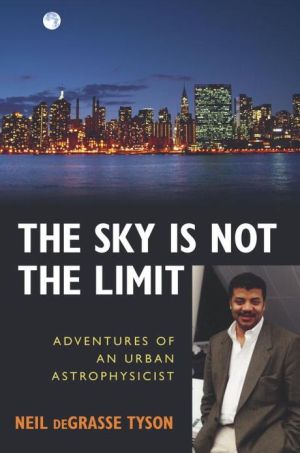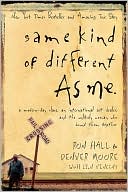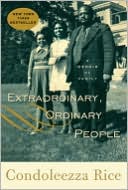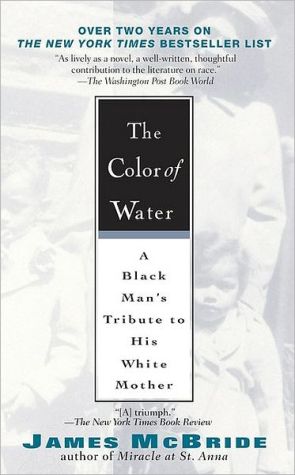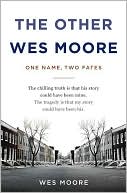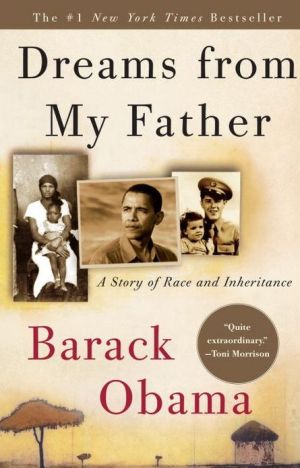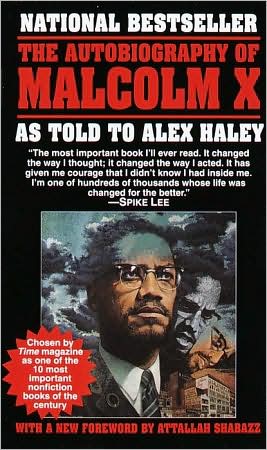The Sky is Not the Limit: Adventures of an Urban Astrophysicist
This is the absorbing story of Neil deGrasse Tyson’s lifelong fascination with the night sky, a restless wonder that began some thirty years ago on the roof of his Bronx apartment building and eventually led him to become the director of the Hayden Planetarium. A unique chronicle of a young man who at one time was both nerd and jock, Tyson’s memoir could well inspire other similarly curious youngsters to pursue their dreams.\ Like many athletic kids he played baseball, won medals in track and...
Search in google:
DeGrasse, the director of the Hayden Planetarium, brought the world total of black astrophysicists to seven when he earned his PhD in astrophysics from Columbia University in 1991. He recalls his youth in the Bronx and the pivotal experiences and mentors who inspired him to study astronomy, reflecting on science literacy, racial stereotypes, and what science can and cannot say about the existence of God. B&w personal photos are included. Annotation © 2004 Book News, Inc., Portland, ORThe New York Times - Scott Gabriel Knowles… the book is strongest when Tyson connects his personal experiences to the development of his professional career.
Night Vision\ \ Building a Relationship With the Sky\ \ THE EARLY YEARS\ \ It was a dark and starry night. The sixty-five-degree air was calm. I felt as though I could see forever. Too numerous to count, the stars of the autumn sky, and the constellations they trace, were rising slowly in the east while the waxing crescent moon was descending into the western horizon. Aloft in the northern sky were the Big and Little Dippers, just where they were described to be, just as they were described to appear. The planets Jupiter and Saturn were high in the sky. One of the stars--I don't remember which--seemed to fall toward the horizon. It was a meteor streaking through the atmosphere. I was told there would be no clouds that night, but I saw one. It was long and skinny and stretched across the sky from horizon to horizon. No, I was mistaken. It wasn't a cloud. It was the Milky Way--with its varying bright and dark patches giving the appearance of structure and the illusion of depth. I had never seen the sky of the Milky Way with such clarity and majesty as that night.\ \ Forty-five minutes of my suspended disbelief swiftly passed when the house lights came back on in the planetarium sky theater.\ \ That was the night. The night the universe poured down from the sky and flowed into my body. I had been called. The study of the universe would be my career, and no force on Earth would stop me. I was just nine years old, but I now had an answer for that perennially annoying question all adults ask: "What do you want to be when you grow up?" Although I could barely pronounce the word, I would tell them, "I want to be an astrophysicist."\ \ From that moment onward,one question lingered within me: Was this majestic planetarium sky an accurate portrayal of the real celestial sphere? Or was it a hoax? Surely there were too many stars. I had proof because I had seen the night sky from the Bronx--from the rooftop of my apartment house. Built upon one of the highest hills of the borough, it was one of a set of three buildings that were prophetically known as the Skyview Apartments.\ \ In one of the other two Skyview buildings lived a close friend--a classmate in elementary school. My friend lived in a single-parent home with an older brother and sister, both of whom had active social agendas. The father, who retained custody of the three kids after the divorce, worked long hours and he was only rarely at home. My friend, instead, spent a lot of time over at my place, especially on the weekends. His father assumed that the stability of my two-parent up bringing would add some structure and discipline to his life. While this may have been true, I am certain that my friend's influence on me was far greater. He taught me to play chess, poker, pinochle, Risk, and Monopoly. He introduced me to brainteaser books, which, if you are unfamiliar with the genre, are books that resemble collections of those dreaded word problems from your high school math class. Well-written brainteasers, however, have clever O. Henry-like plot twists in their answers that trick you with their simplicity. My favorite was: Start with four ants, one on each corner of a square board that measures twelve inches on a side. Each ant decides to walk at the same speed directly toward the ant to its right. By the time all four ants meet in the middle of the table, how far has each one traveled? (Answer: twelve inches.)\ \ Or, start with a brand new, unshuffled deck of cards. The cards are sorted by suit and sequenced by number (typical of their configuration when first purchased). Cut the deck, just as one might do before a card game, but do it one hundred consecutive times. What are the chances that all fifty-two cards will still be sorted by suit and ordered by number? (Answer: 100 percent.)\ \ I loved teasers that involved math: Counting one number per second, how long would it take to reach a trillion? (Answer: 31,710 years.) And more entertaining problems like: How many people must you collect into a room before you have a better-than-even chance that two of them would have the same birthday? (Answer: twenty-four.)\ \ The more we played, the more stretched and sharpened my eleven-year-old brain became.\ \ My friend's most important contribution to my life's path, however, was introducing me to binoculars. I had used them before--primarily to view sporting events and to look into other people's windows. My friend instead encouraged me to look up. He encouraged me to look beyond the streetlights, beyond the buildings, beyond the clouds, and out toward the Moon and stars of the night sky.\ \ Nothing I can write will capture my acute cosmic imprinting when I first viewed the waxing crescent moon across the Hudson River and above the Palisades of New Jersey during a cloudless twilight evening. The Moon through those 7 x 35s was not just bigger, it was better. The coal-dark shadows sharply revealed its surface to be three-dimensional--a rich moonscape of mountains and valleys and craters and hills and plains. The Moon was no longer just a thing on the sky--it was another world in the universe. And if simple binoculars could transform the Moon, imagine what mountaintop telescopes could do with the rest of the universe.\ \ Galileo was the first person in the world to look up with a good enough telescope to see what no one before him had ever dreamed: structure on the lunar surface, revolving spots on the Sun, the phases of Venus (just like the Moon), Saturn and its rings, Jupiter and its restless moons, and stars composing the faint glow of the Milky Way. When I too first saw these things I communed with Galileo across time and space. Galileo's "observatory" was his windowsill and his rooftop--so was mine. My discoveries, although old news for society, were no less astonishing for me than they must have been for Galileo in 1610.\ \ I would soon learn to feed this intellectual hunger. My sixth-grade homeroom and science teacher was Mrs. Susan Kreindler, who was a tall woman with a keen sense of academic discipline. She was probably also one of the smartest teachers in my elementary school, PS-81. For the third quarter of my sixth grade report card she wrote, in round-hand cursive, "Less social involvement and more academic diligence is in order!"\ \ Mrs. Kreindler also happens to be the teacher who, on her own time, clipped a small advertisement from the newspaper announcing that year's offering of astronomy courses at the Hayden Planetarium. One of them was called "Astronomy for Young People" and was for kids in junior high school and the first years of high school. Mrs. Kreindler knew of my growing interest in the universe, based on the proportion of astronomy-related book reports that I had been submitting. She concluded that the courses would probably not be out of my reach recommended that I explore them. She also figured that if my excess social energy were intelligently diverted outside the school, I could grow in ways unfettered by the formal limits of the classroom. Mrs. Kreindler packaged and redirected my "social involvement" that she had criticized. From then onward, the Hayden Planetarium became a much broader and deeper resource to the growth of my life's interests. I had previously known it only to be a place with a beautiful night sky--but I came to learn that the actual universe is much, much bigger.\ \ A student's academic life experience can be constructed from much more than what happens in a classroom. Good teachers know this. The best teachers make sure it happens.
\ Scott Gabriel Knowles… the book is strongest when Tyson connects his personal experiences to the development of his professional career. \ — The New York Times\ \ \ \ \ Publishers WeeklyNot many teenagers get to hobnob with the likes of the late Carl Sagan or to go on a luxury cruise liner with the world's leading astrophysicists to observe a solar eclipse off the coast of Africa. But from a young age, Tyson single-mindedly pursued his goal of exploring the universe. Today he is the director of New York City's renowned Hayden Planetarium and is well known from his appearances on the evening news, most recently as a leader of the movement to downgrade Pluto from its status as a planet. In this pleasing memoir, Tyson tells of his early adventures in rooftop observation of the heavens, his sister lugging heavy stuff up to the roof of his Bronx apartment building while he carried his precious telescopes. His insistence on the importance of scientific education shines through in the second half of the book, where he explains esoteric subjects like dark matter and the Big Bang without talking down to readers. Tyson argues passionately for the importance of exploring space, since our planet will one day become uninhabitable. The author doesn't spend much time on aspects of his life unrelated to science, though he gives a powerful account of his escape from his apartment near ground zero on September 11. Tyson's recounting of some of the obstacles and misperceptions that he had to overcome as a young person of color to achieve his goals should inspire and inform young readers. But this graceful and thoughtful memoir will also appeal to adults interested in exploring the heavens. B&w photos. Agent, Betsy Lerner, Gernett Co. (May) Copyright 2004 Reed Business Information.\ \ \ Publishers WeeklyTyson (see One Universe, reviewed above) directs the Hayden Planetarium in New York City. His pleasant, digressive memoir explains how he got there, what it's like to be a famous astronomer and what he thinks of his work. At first it's a story about how science education can go right. We learn that Tyson, who is African-American, grew up among tall buildings in the Bronx--but his is not a story of triumph over grinding poverty. Young Tyson got a break from the city when his father found a one-year lectureship at Harvard, and as for the electricity required to run one of his first telescopes, "my dentist... happened to live on the nineteenth floor." Tyson's later chapters offer memories, anecdotes and musings on astrophysics, education, politics, popular culture and even wrestling, in which Tyson competed until grad school. Tyson explains how his wrestling skills and knowledge of physics helped him end an Italian traffic jam by lifting a parked car, and how he tried to buy a meteorite but lost an auction to Steven Spielberg. In one chapter, Hollywood's science mistakes raise Tyson's ire (the film Titanic got its night sky all wrong); in the next, he discusses getting stopped by police for "Driving While Black." With sentences like "The universe poured down from the sky and flowed into my body," Tyson may not be his discipline's best prose stylist; neither his essays nor his life match the unpredictable charm of Richard Feynman's. But he comes off very likably, and presents physics with ease and clarity. It's easy to imagine his memoir inspiring young future astrophysicists--and inspiring grownups to help them out. (Feb.) Copyright 2000 Cahners Business Information.\|\ \ \ \ \ BooknewsAfrican American astrophysicist Neil De Grasse Tyson offers an insightful account of the path that led him from his childhood in the Bronx to his current tenure as the youngest-ever director of New York City's Hayden Planetarium. Annotation c. Book News, Inc., Portland, OR (booknews.com)\ \
